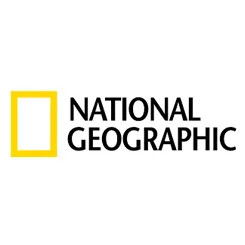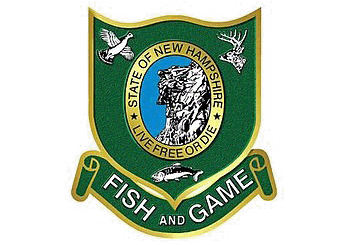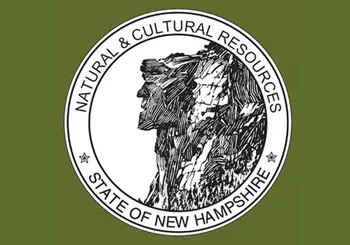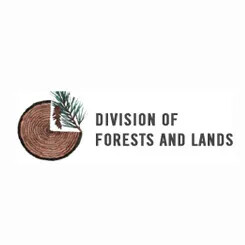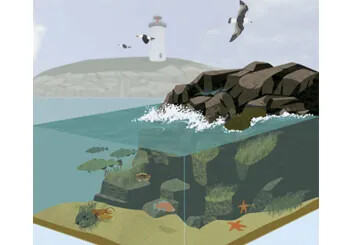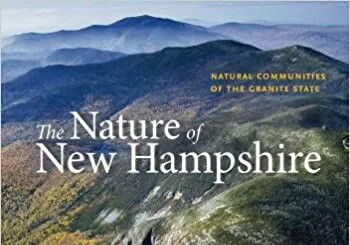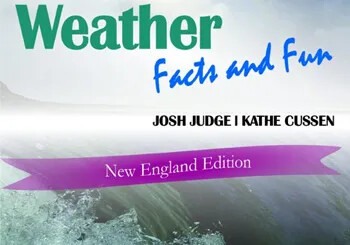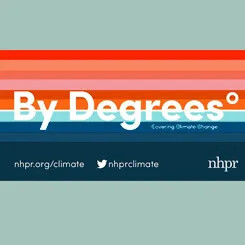How does the geography of New Hampshire support plant and animal life?
New Hampshire’s wide topographical and geospatial ranges support a variety of climate zones and habitats where different plants and animals are able to live. Features of New Hampshire’s land provide 27 unique habitats for 500 species of wildlife, not including the ubiquitous insects. The New Hampshire Fish and Game Department divides these into the following six categories:
Forests: Eighty percent of New Hampshire is covered by forest, making it the second most forested state in the country, behind Maine. This dense forest cover represents a massive reforesting of the state, as 250 years ago much of New Hampshire’s forest had been cleared for farms and pastureland. Even the state’s mountains were deforested in the late 1800s and early 1900s when the logging industry boomed. These changes in land cover have also changed the plant and animal species that live and grow in forest areas. Much of the state is covered by forests of hemlock, white pine, beech, and oak trees. Forests of spruce and fir, as well as mixes of beech, sugar maple, yellow birch, and eastern hemlock, are found at elevations ranging from 1,000 to 3,500 feet above sea level. At elevations below 900 feet, forests usually feature oak, hickory, and sugar maple. Many birds and mammals make their homes in New Hampshire’s forests including black bears, lynx, moose, bats, scarlet tanagers, purple finches, eagles, turtles, snakes, salamanders, and toads.
Alpine, Rock, and Cave: Above the tree line, which occurs at about 4,900 feet, New Hampshire’s peaks feature an alpine habitat of low temperatures, high winds, and precipitation. In fact, the Presidential Range contains 12 square miles of alpine tundra. Bigelow’s sedge grows in this unique environment, which is also home to the American pipit, a bird that breeds in alpine habitats, and the artic butterfly. Rocky ridges, cliffs (such as the historic Old Man of the Mountain), and masses of rock debris called talus slopes provide homes throughout the state to bobcats, timber rattlesnakes, and golden eagles. While some caves, such as the Polar Caves in Rumney, are due to glacial movement, others are human-made.
Lakes, Ponds, and Rivers: The thousands of cold-water and warmwater lakes, ponds, rivers, and streams across New Hampshire support a huge array of aquatic life. Typically, bodies of water with cold-water habitats occur in the northern part of the state or at higher elevations and support fish like brook trout, lake trout, and burbot. The common loon also makes its home around these types of bodies of water. Warmwater rivers include the Merrimack and Connecticut, downstream of the Upper Ammonoosuc, and support fish like shad and sturgeon. At the time Europeans arrived in New Hampshire in the early 17th century, the fish in the Merrimack were said to be so plentiful that a man could practically walk across the river on them. Bald eagles depend on the aquatic life of New Hampshire’s rivers for food.
Grass, Shrub, and Developed Land: Grasslands feature sedges, grasses, wildflowers, and few shrubs or trees. As the amount of forest has increased in the state, the amount of grassland has decreased. Farm and pastureland used to provide a great deal of the grassland habitat in New Hampshire. Species including bumblebees, meadowlarks, turtles, and upland sandpipers live in New Hampshire’s grasslands. Animals like the New England cottontail rabbit and the woodcock need the increased cover provided by shrublands. Interestingly, human-made structures in developed land, like multistory buildings, often simulate some of the features of natural formations like the cliffs that peregrine falcons and swifts depend on for finding food and shelter. Many bees have turned to orchards and nurseries for access to flowering plants.
Wetlands: Swamps, peatlands, floodplains, and vernal pools are all examples of wetland habitat that occur in New Hampshire. Swamps, which in New Hampshire are essentially forested areas with poor drainage, provide habitats for shrews, salamanders, and bats. Peatlands, which feature low-nutrient, high-acidity water, support white cedar, sphagnum moss, and bog lemmings. Floodplains occur in valleys adjacent to rivers. Many animals use these areas as habitat, including beaver, mink, and otter. Vernal pools, which occur seasonally in the spring, are found within nearly all other habitat types.
Coastal: The 18 miles of New Hampshire’s coastline along the Atlantic Ocean offer habitats in the forms of islands, dunes, estuaries, salt marshes, and of course, the ocean itself. Four of the nine Isles of Shoals—so named by early colonists because of the schools, or shoals, of fish that lived in abundance in the surrounding waters—belong to New Hampshire. The islands feature rocky outcrops and shrubby grasses. Seavey and White islands provide habitats for endangered terns as well as seals, barnacles, and monarch butterflies. While the giant inland dunes pushed up by the end of the last ice age have disappeared, coastal sand dunes remain important habitats for bird species like the piping plover. Where rivers meet the sea, estuaries are formed. In these special habitats, eelgrass beds, oyster reefs, and mudflats provide an abundance of nutrients for a wide range of species including horseshoe crabs, herring, and shad. Osprey, among other water birds, feed here. Similarly, salt marshes provide a nutrient-rich combination of land and water that supports many bird species. These tidal wetlands also provide protection from storm surges, though roughly 30 to 50 percent of New Hampshire’s original salt marsh has been lost to development. In the strictly aquatic habitat of the ocean, striped bass, mackerel, and bluefish swim in the waters near the shore. Atlantic cod, lobster, and harbor porpoises also live in the waters near New Hampshire.


